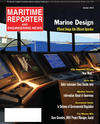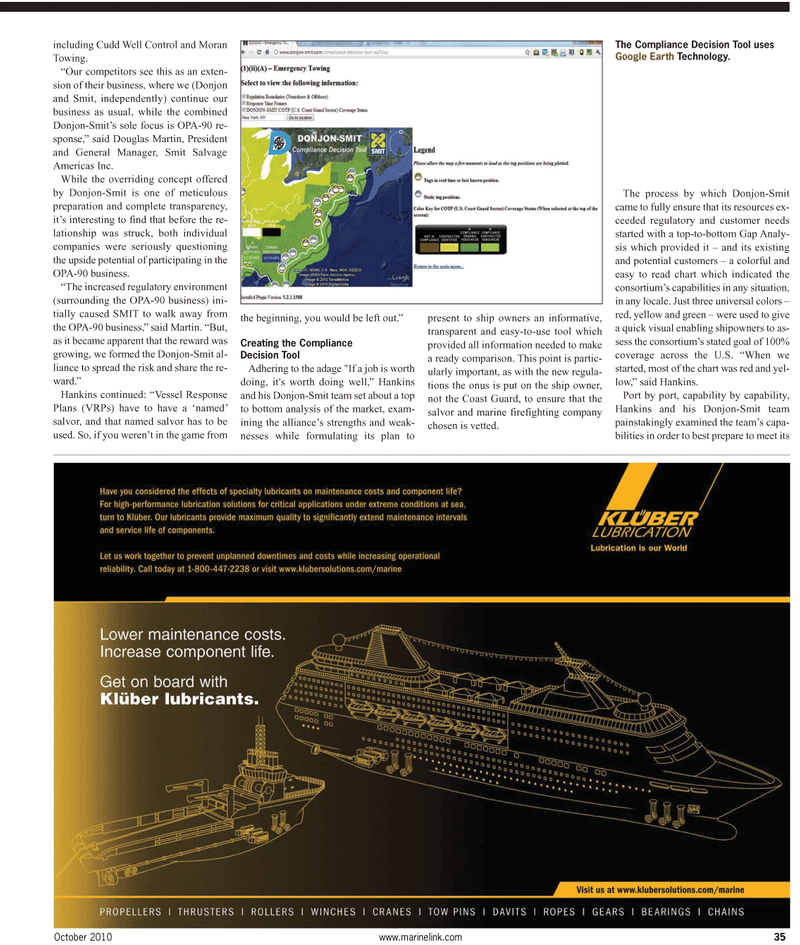
Page 35: of Maritime Reporter Magazine (February 2, 2010)
Read this page in Pdf, Flash or Html5 edition of February 2, 2010 Maritime Reporter Magazine
including Cudd Well Control and Moran
Towing. “Our competitors see this as an exten- sion of their business, where we (Donjon and Smit, independently) continue our business as usual, while the combined
Donjon-Smit’s sole focus is OPA-90 re- sponse,” said Douglas Martin, President and General Manager, Smit Salvage
Americas Inc.
While the overriding concept offered by Donjon-Smit is one of meticulous preparation and complete transparency, it’s interesting to find that before the re- lationship was struck, both individual companies were seriously questioning the upside potential of participating in the
OPA-90 business. “The increased regulatory environment (surrounding the OPA-90 business) ini- tially caused SMIT to walk away from the OPA-90 business,” said Martin. “But, as it became apparent that the reward was growing, we formed the Donjon-Smit al- liance to spread the risk and share the re- ward.”
Hankins continued: “Vessel Response
Plans (VRPs) have to have a ‘named’ salvor, and that named salvor has to be used. So, if you weren’t in the game from the beginning, you would be left out.”
Creating the Compliance
Decision Tool
Adhering to the adage "If a job is worth doing, it's worth doing well,” Hankins and his Donjon-Smit team set about a top to bottom analysis of the market, exam- ining the alliance’s strengths and weak- nesses while formulating its plan to present to ship owners an informative, transparent and easy-to-use tool which provided all information needed to make a ready comparison. This point is partic- ularly important, as with the new regula- tions the onus is put on the ship owner, not the Coast Guard, to ensure that the salvor and marine firefighting company chosen is vetted.
The process by which Donjon-Smit came to fully ensure that its resources ex- ceeded regulatory and customer needs started with a top-to-bottom Gap Analy- sis which provided it – and its existing and potential customers – a colorful and easy to read chart which indicated the consortium’s capabilities in any situation, in any locale. Just three universal colors – red, yellow and green – were used to give a quick visual enabling shipowners to as- sess the consortium’s stated goal of 100% coverage across the U.S. “When we started, most of the chart was red and yel- low,” said Hankins.
Port by port, capability by capability,
Hankins and his Donjon-Smit team painstakingly examined the team’s capa- bilities in order to best prepare to meet its
October 2010 www.marinelink.com 35
The Compliance Decision Tool uses
Google Earth Technology.

 34
34

 36
36
